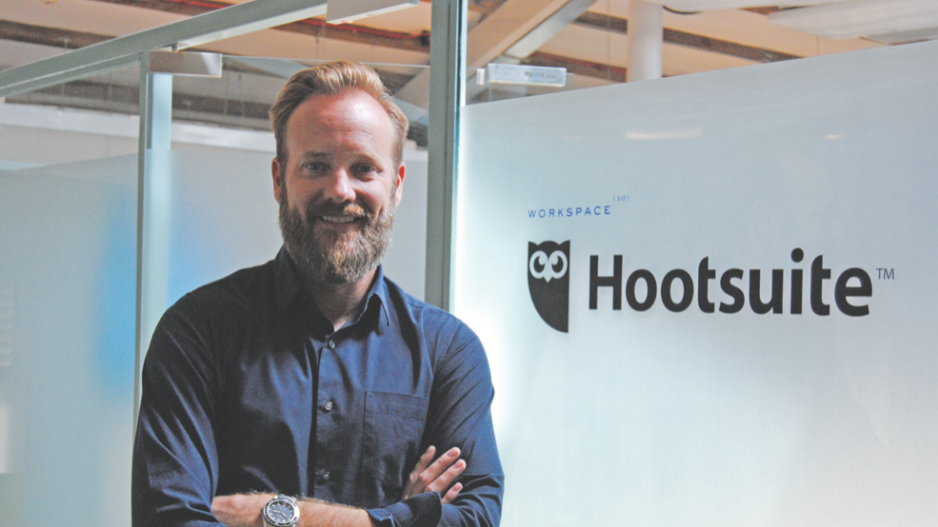SINGAPORE - Hootsuite’s Singapore offices on Keong Saik Road are in the middle of a move.
In short order, the Vancouver-headquartered social media management platform will be relocating its 20-to-25-person Asia Pacific team out of a co-working space to offices in the heart of the country’s financial district to enable more capacity for growth.
“We grow quite well, and we generally grow faster than other markets. And partly because the North American market has been developed for so much longer,” explained Roger Graham, Hootsuite’s senior director of marketing and growth for the Asia-Pacific (APAC) region.
According to Graham, the company’s team grew 40% in 2016, and web traffic has grown by 50% over the last 14 months. Three million of the platform’s more than 16 million users are in the region, with Japan ranking as Hootsuite’s third-largest global market for user sign-ups.
But even with APAC in his title, Graham is quick to point out that in some ways, the term is misleading.
“It’s a very diverse region, and that term APAC oversimplifies the business challenge that we go through,” he said. “You kind of have to get into each country almost to figure out what’s optimal.”
One of the biggest challenges for Canadian companies in Asia – whether startups or multinationals – is navigating that diversity, country to country.
“It’s kind of like a really big MBA case study on how to grow a business,” added Graham, and it shows up in everything from how business is conducted to the level of technological adoption within firms to how populations engage online and which platforms they use.
Access-to-internet figures provide a good case in point. Where internet penetration is at 88% in North America, it ranges from 69% in Oceania – which includes Australia and New Zealand – to 58% in Southeast Asia and 36% in South Asia, anchored by India.
Within Southeast Asia, 80% of people in Singapore are connected, compared with just one in five in Cambodia.
“You can’t just kind of set up in Singapore and assume that’s your ASEAN [Association of Southeast Asian Nations] strategy done,” said Peter Harris, Sydney-based executive vice-president and managing director of Asia-Pacific for Vancouver’s Vision Critical.
After expanding to Asia via Hong Kong in 2012, Vision Critical opened its Singapore offices in 2014 as a regional hub, now staffed with 13 people, including the company’s regional heads of consumer success, and product and sales engineering. Geographically, the location was desirable, as was Singapore’s appetite to adopt new technologies.
Last year, the company saw double-digit growth in the region and expects the same in 2018, but Harris said it has taken time to build the 18-year-old company’s brand in a new market.
“To be honest, if you’re a North American company that is trying to work in Asia, there’s often a lot of skepticism because there’s been lots of North American companies that have tried and failed in Asia,” he said. “The first question we used to always get was: ‘Are you guys here for the long run?’”
Two years ago, Vancouver technology entrepreneur Pavel Bains up and left the city to show just that.
“Me and my co-founder [Neeraj Murarka] came here with just our backpacks, no contacts, and just said: ‘OK, let’s just go,’” said Bains, CEO and co-founder of Bluzelle, which is building a decentralized database solution for developers and firms.
“If you’re targeting Asia you have to be here.”
Bains co-founded Bluzelle in Vancouver, where the company’s 10-person tech team remains, before relocating to Singapore. The impetus behind the move was to be closer to the startup’s initial target customers: financial institutions and insurers.
Bluzelle now has a five-person team in the Lion City. It closed a US$1.5 million Series A round last year, raised US$19.5 million in an initial coin offering in January and just announced a fresh million-dollar investment in March.
“It was exciting,” said Bains of his switch to Singapore. “I felt Vancouver was stagnant to me.”
Relationship building, committing boots on the ground, focusing on specific markets within the broader Asian region and accessing Canadian diplomatic and trade representatives have helped B.C. technology companies branch out into the hemisphere home to East Asia and the Pacific – what the World Bank has flagged as the world’s fastest-growing region.
“In the last couple of years, I’ve noticed a lot more technology companies setting up regional headquarters-type of operation here,” said Michael Nicholas, managing director for Singapore and Malaysia at the B.C. government’s new trade and investment office in Singapore.
Nicholas added that the ASEAN region can be an easier one for small and medium-sized businesses to tackle in comparison with China or India: its population is smaller – some 650 million people – but growing, with an expanding middle class, and half of its population under the age of 30, according to the World Economic Forum. The region also boasts a strong mobile-first mentality, and some countries count more phones per capita than in North America.
“Things are starting to happen in the Asian region, compared to, say, five years ago,” said Harris. “Many Canadian companies focus on the U.S. as a core market, but a market like Singapore–ASEAN offers incredible opportunity if you can get it right.” •
Hayley Woodin’s work in Singapore and Southeast Asia is supported by an Asia Pacific Foundation of Canada media fellowship for 2017-18.




